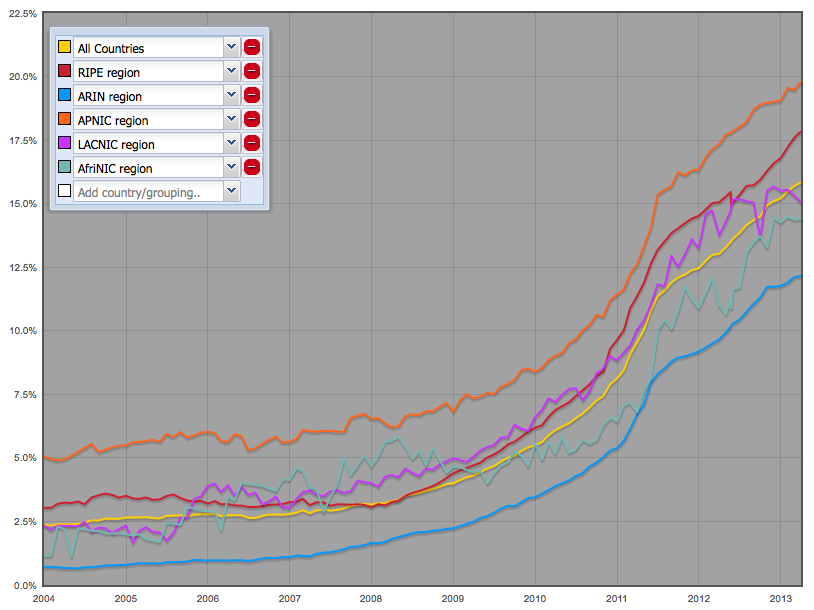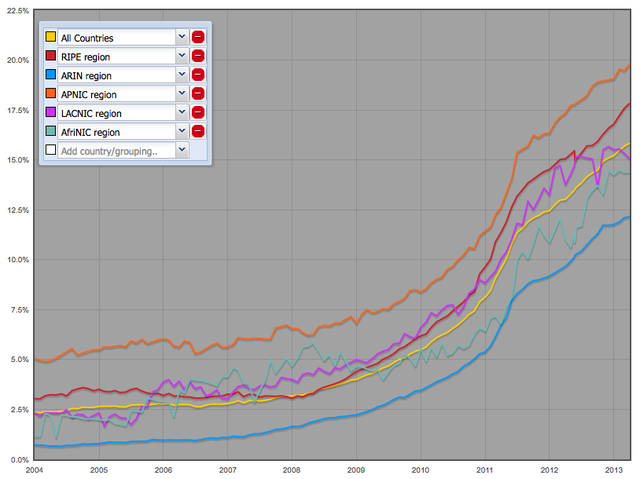We regularly check the status of IPv6 deployment in the RIPE NCC service region, but also in other regions. One way to measure IPv6 deployment is to look at the percentage of networks (Autonomous Systems) announcing IPv6 prefixes and to follow the developments over time.
The IPv6-ASN graph shows the percentage of networks that announce one or more IPv6 prefixes in the global routing system. Having an IPv6 prefix visible in the global routing system is a required step for a network to actually start exchanging IPv6 traffic with other networks. On the interactive graph you can specify the countries or regions in which you are interested. This graph is updated monthly.
The image below shows the percentage of Autonomous Systems announcing IPv6 prefixes in each Regional Internet Registry (RIR) region over the last few years. When you click on the image it brings you to the live graph.
It is interesting to see that the percentage of networks announcing IPv6 address space in the APNIC and RIPE NCC regions continues to increase steadily. Both of these RIRs have reached their last /8 of IPv4 addresses.
The percentage for the ARIN region, which is projected to be the RIR that reaches its last /8 of IPv4 addresses next, is also still increasing. The percentage of IPv6 enabled networks for the Lacnic and the AFRINIC regions seems to have stopped growing. For the Lacnic region, this number even went down a bit over the last few months. Even though the absolute number of IPv6 announcing networks grew from 388 to 399 since the beginning of 2013, this growth is slower than the total growth of networks in this region that are visible in the global routing system, which results in a total percentage decrease from 15.5% to 15.0% for this period.
Even though this might not be a surprise, it's good to see that those regions in which the 'free pool' of IPv4 addresses has been depleted show a steady growth in the percentage of networks that announce IPv6 address space.
If you find other interesting comparisons between countries and/or regions, please comment below!






Comments 1
The comments section is closed for articles published more than a year ago. If you'd like to inform us of any issues, please contact us.
ABRAHAM •
soon this new version running out